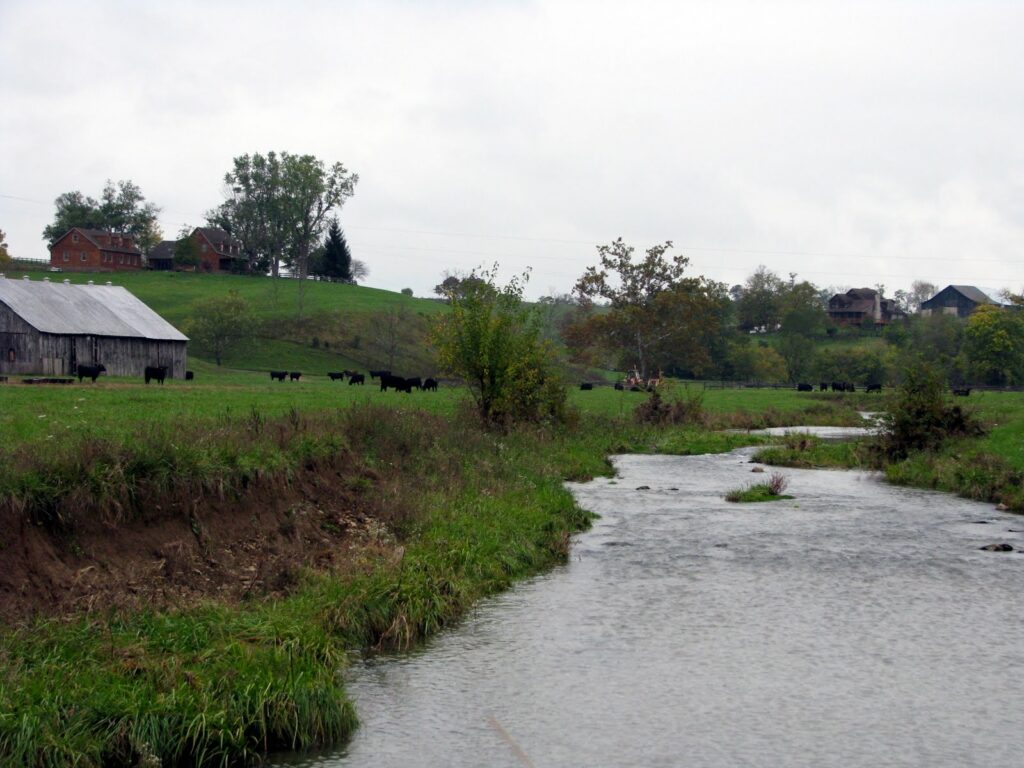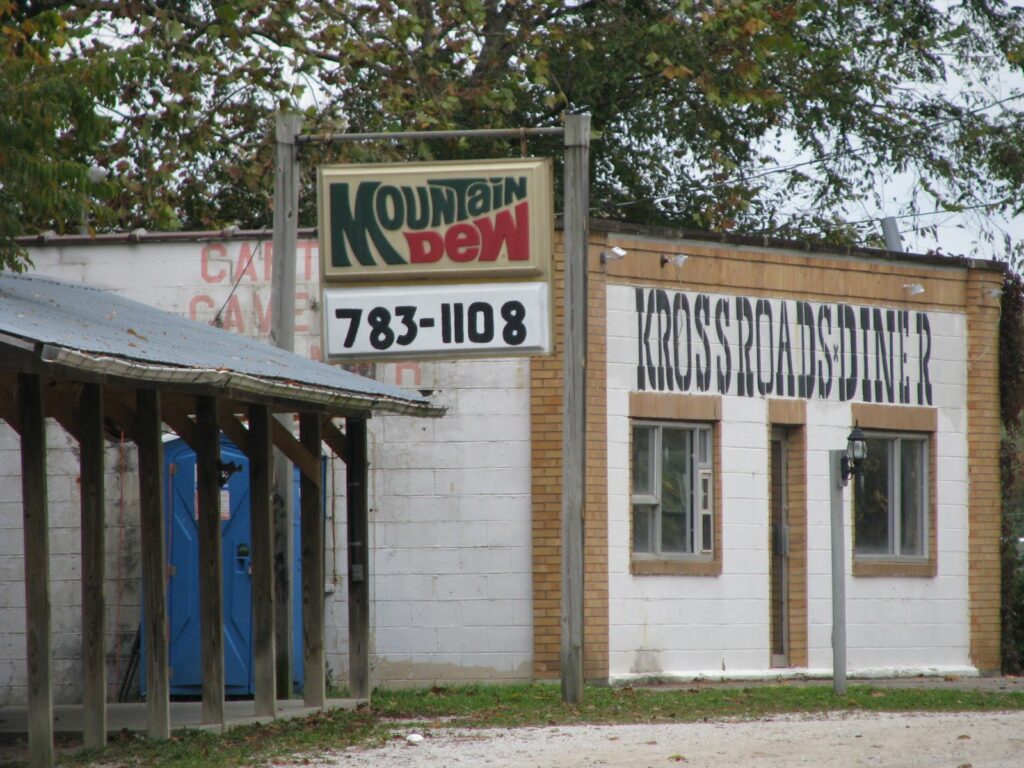 In the western part of Rowan County, the county’s first community began to be settled around 1792 on the banks of the Licking River. The town, CrossRoads, was named for obvious reasons. Hard timber in the area made CrossRoads (later renamed Farmers in 1882) a boom-town, until timbering became exhausted c. 1900. By then, much of the commerce had shifted ten miles east to the county seat: Morehead.
In the western part of Rowan County, the county’s first community began to be settled around 1792 on the banks of the Licking River. The town, CrossRoads, was named for obvious reasons. Hard timber in the area made CrossRoads (later renamed Farmers in 1882) a boom-town, until timbering became exhausted c. 1900. By then, much of the commerce had shifted ten miles east to the county seat: Morehead.
Tag: NoDestination
No Destination: Cave Run Lake
 I wasn’t expecting to see Cave Run Lake at all (road construction detoured my route), but I am so glad I did. It was peaceful, tranquil and beautiful. Above is a picture taken from a short trail near the Cumberland Ranger District office in Rowan County.
I wasn’t expecting to see Cave Run Lake at all (road construction detoured my route), but I am so glad I did. It was peaceful, tranquil and beautiful. Above is a picture taken from a short trail near the Cumberland Ranger District office in Rowan County.
Below is a video taken near Clear Creek – at the southern end of Cave Run Lake in Menifee. The only sounds were the wind rustling the tree next to me and the water rippling onto the boat ramp (Leatherwood boat ramp, on which I was sitting).
The lake was created by the Army Corps of Engineers in a project that began in 1965. The dam became operational in 1974. Cave Run Lake is 8,270 acres (summer) in size.
No Destination: Frenchburg
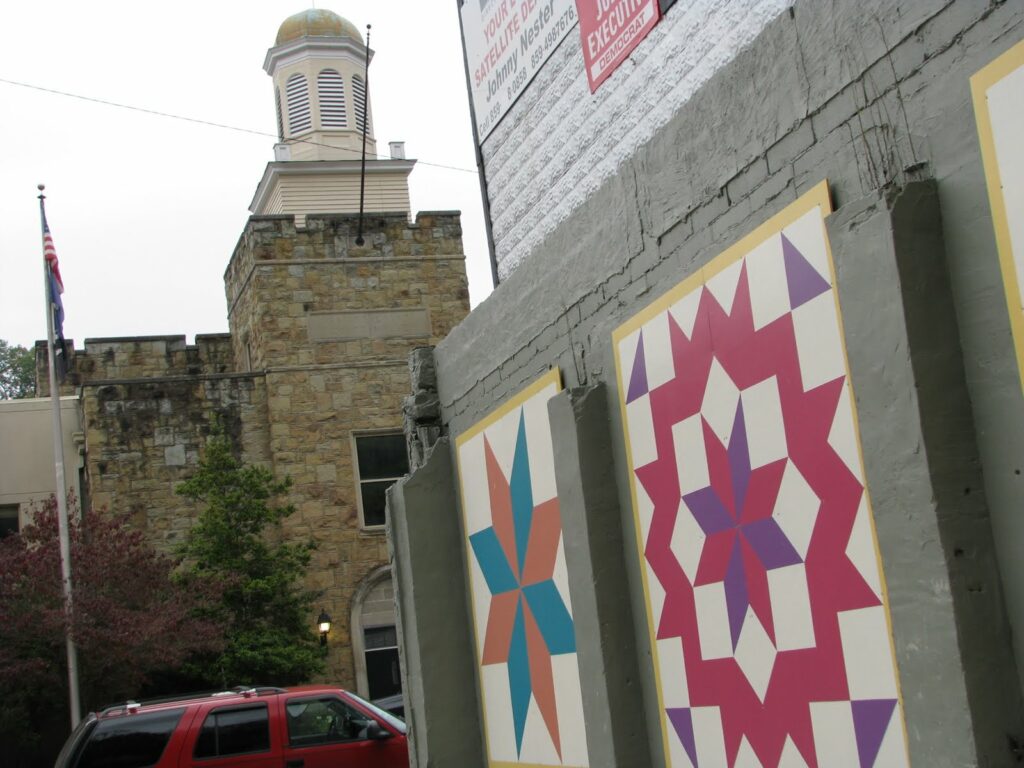 Menifee’s County seat, Frenchburg, has (c. 2000) a population of 551. This small-town was established in 1869 to be the county seat and is the only incorporated community in this rural county.
Menifee’s County seat, Frenchburg, has (c. 2000) a population of 551. This small-town was established in 1869 to be the county seat and is the only incorporated community in this rural county.
The county was named after Congressman Richard Menefee, but the state general assembly misspelled the name when chartering the county. In a Congressional 1837 election, Menefee defeated Richard French. French, a lawyer and judge, is the namesake of Frenchburg.
Beyond the already discussed and defunct Frenchburg School, there is little in this town. Pictured above are a few of the ‘quilts’ that are frequently found in the area and a corner of the Menifee County courthouse. It is a really cool building…I’ll save the details for Nate.
No Destination: Frenchburg School Campus
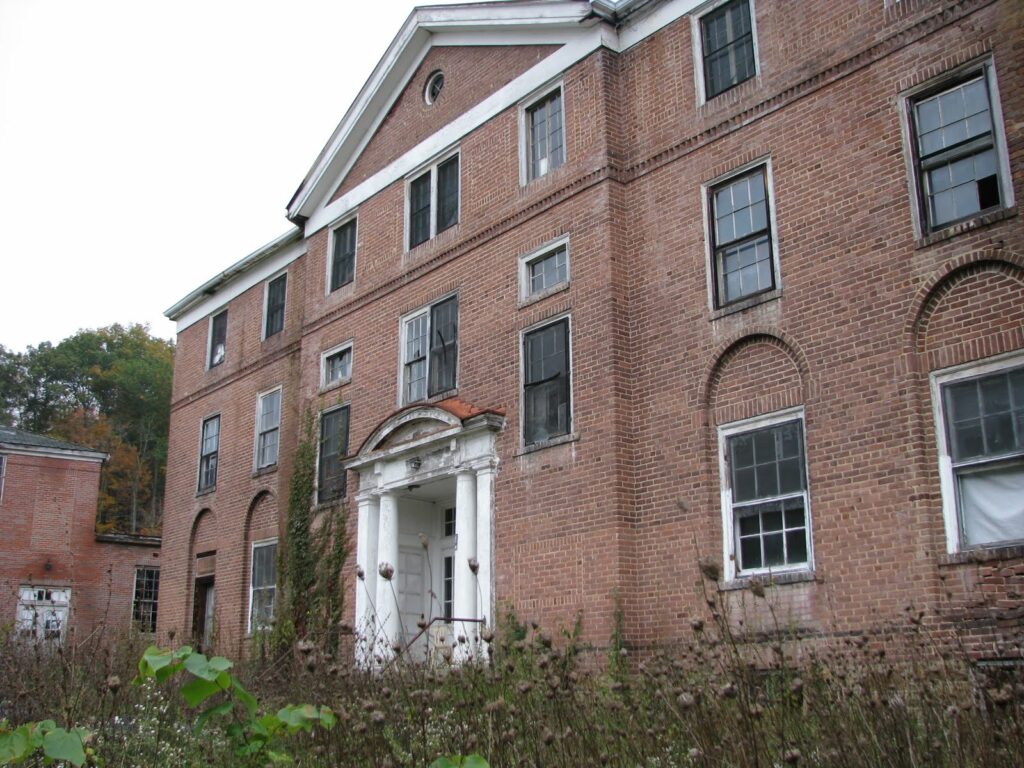 Driving into Frenchburg, I noticed several abandoned buildings behind the Sav-A-Lot that piqued by interest. The three large brick buildings were completely out of place. Finding information, even with the internet, proved difficult at first.
Driving into Frenchburg, I noticed several abandoned buildings behind the Sav-A-Lot that piqued by interest. The three large brick buildings were completely out of place. Finding information, even with the internet, proved difficult at first.
The Frenchburg School opened in 1909 by the Presbyterian church. It provided religious, educational and medical services to regional residents. In fact, for several years after the opening of its hospital in 1915, Frenchburg had the only hospital located between Lexington and Ashland. (Note: Watch this YouTube video created in 1944 featuring Frenchburg physician Dr. Richard Adler – it is very interesting.) The Frenchburg School also provided the only high school educational offering in the county (despite state law mandates).
The three brick buildings I saw were the School Building (c. 1910, two-story), the Girls’ Dormitory (c.1917, three-story Georgian Revival) and the Hospital Building (c. 1941, Neo-Georgian replacing original 1915 structure lost to fire). In their hayday, the buildings would have been typical of the “classical renaissance that developed in the late 19th century … suitable for an academic setting.”
The buildings have been vacant since at least 1978, when the site was listed on the National Register of Historic Places. The Application was a source of much of the information in this post is available here (PDF).
No Destination: Menifee County
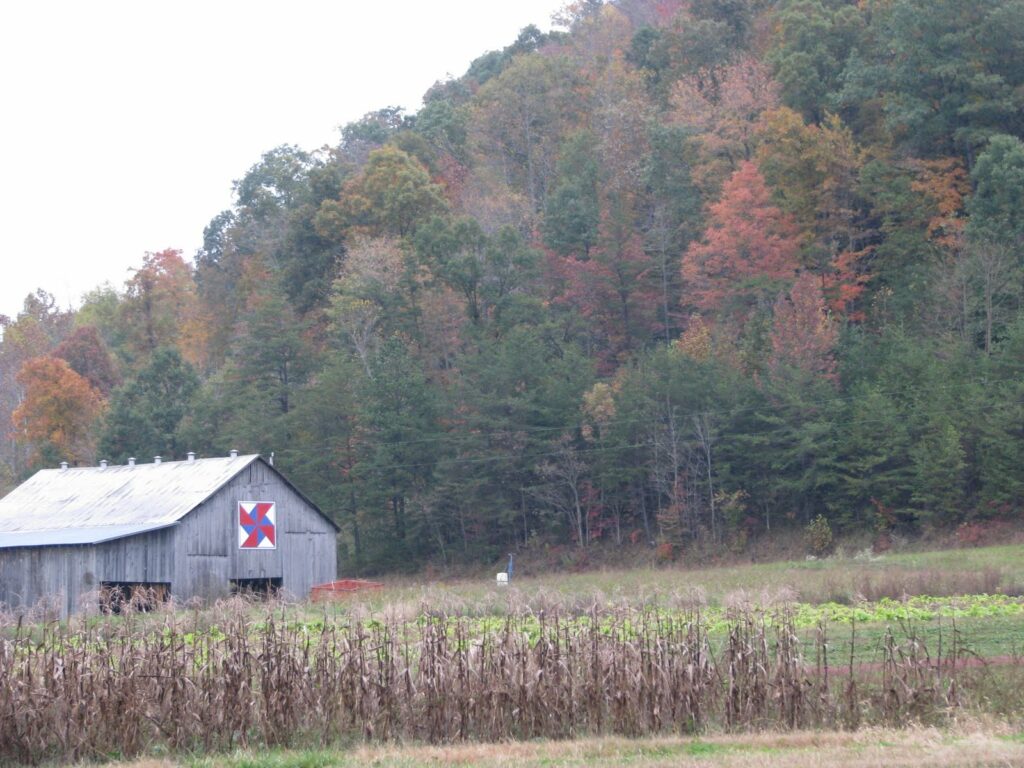 Just east of Means, Kentucky – an unincorporated community in Menifee County – I twice pulled off the road. Now in the Daniel Boone National Forest, the leaves were really starting to change colors. The first is pictured above.
Just east of Means, Kentucky – an unincorporated community in Menifee County – I twice pulled off the road. Now in the Daniel Boone National Forest, the leaves were really starting to change colors. The first is pictured above.
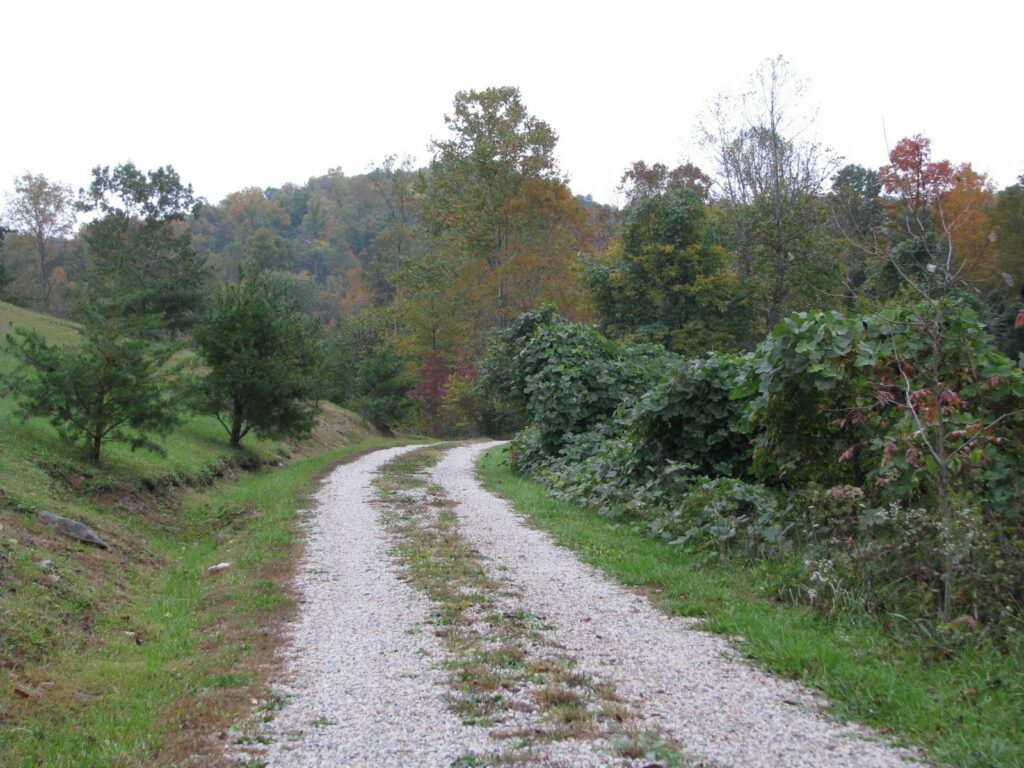
The second time I pulled off the road, I went up a steep, gravel road (Scenic Ridge Road). About mid-way up, I questioned whether this was a good idea (for those that don’t know, I drive a Honda Fit). Anyway, I made it and the view was great. But also disappointing. I had no idea that the kudzu invasion had reached this part of Kentucky. Apparently, as evidenced below, it has.
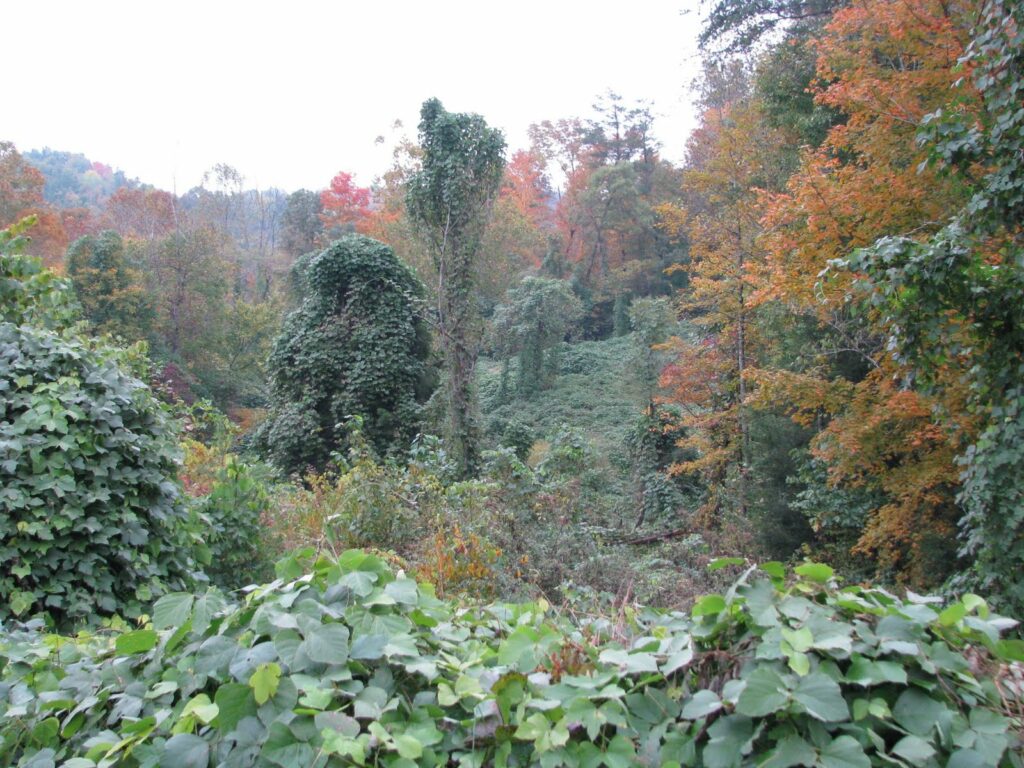
No Destination: Montgomery County
No Destination: First Presbyterian Church of Mount Sterling
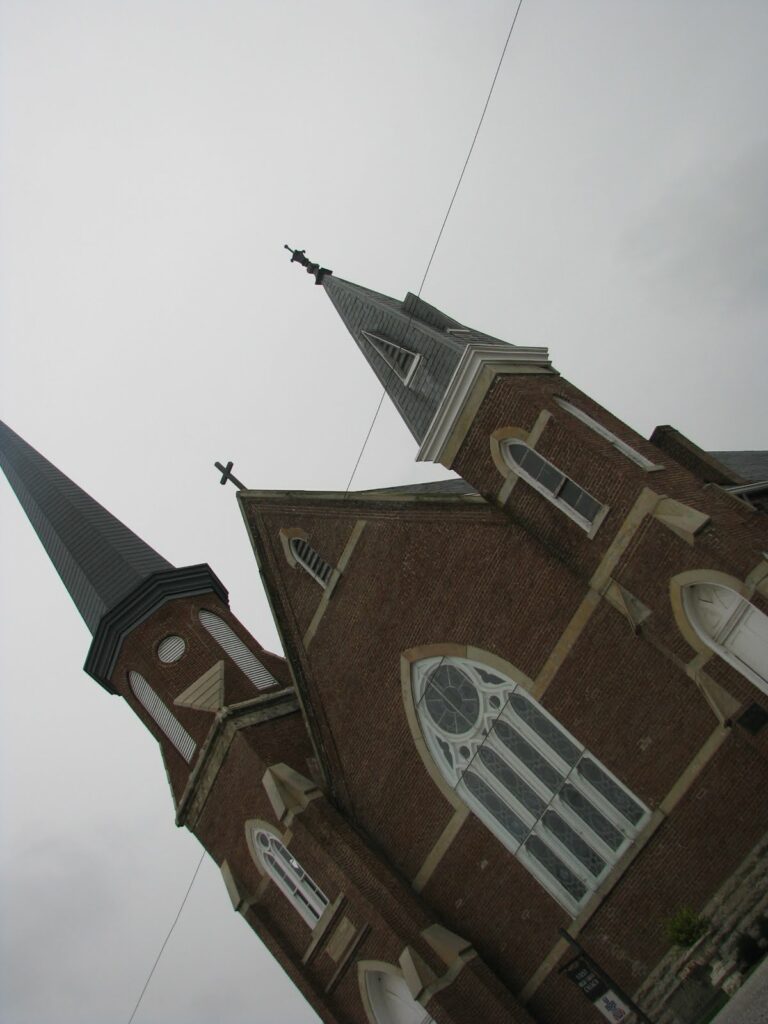 Traveling Kentucky’s counties in the fall is a risky proposition. You never know when you might run into a county’s fall festival. This was the case yesterday: Court Days in Mount Sterling.
Traveling Kentucky’s counties in the fall is a risky proposition. You never know when you might run into a county’s fall festival. This was the case yesterday: Court Days in Mount Sterling.
All on-street parking was closed and I pulled into the lot of the Presbyterian Church (pictured above). The man said that I could not park there without paying, even if it were only for a few minutes. Note: he had no customers. Instead, I turned around and parked in a lot around the corner. The woman in that lot said that I could park there momentarily with no trouble and she pointed me toward the Courthouse.
I walked around Mount Sterling and returned to snap a few pictures of the Presbyterian Church. The man from earlier apologized; I told him it was not a problem and that a kind woman around the corner had allowed me to park gratis. I joked with him that he had “married up,” as it was his wife managing the lot around the corner.
The wife also told me about the Presbyterian Church. Next door to the church is the “Presbyterian Post,” (pictured below) which functions as additional space for the church, a community center and a community medical clinic. The Post is the old Post Office – likely constructed around 1910 and purchased by First Pres in 1991.
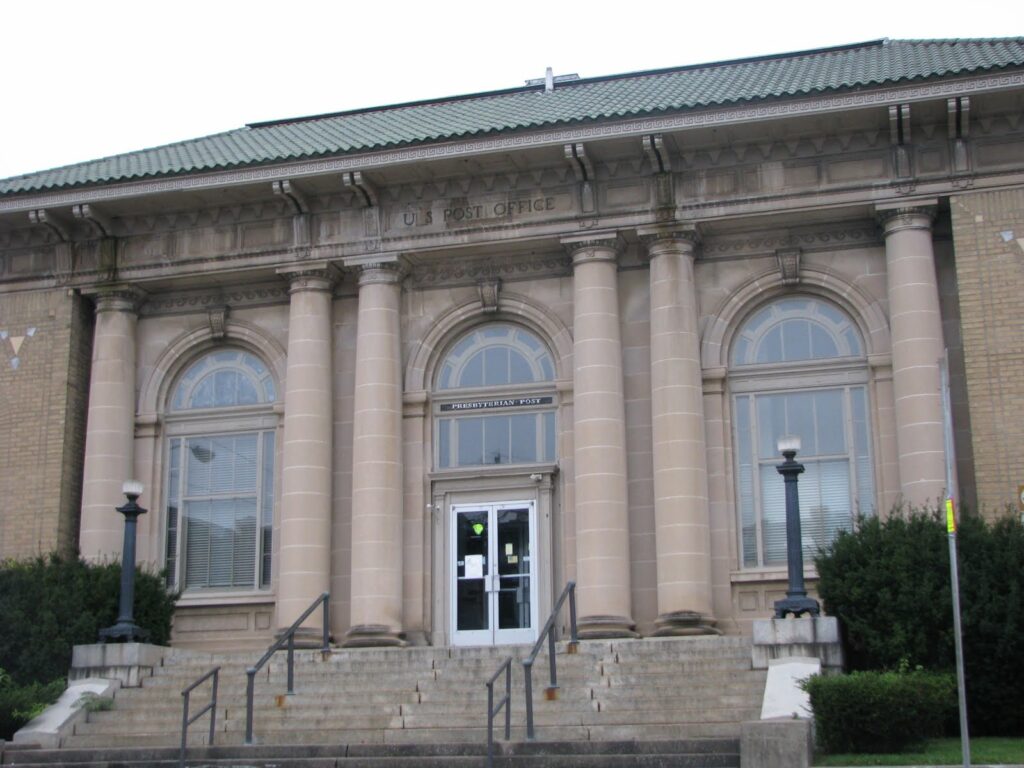
No Destination: Mount Sterling
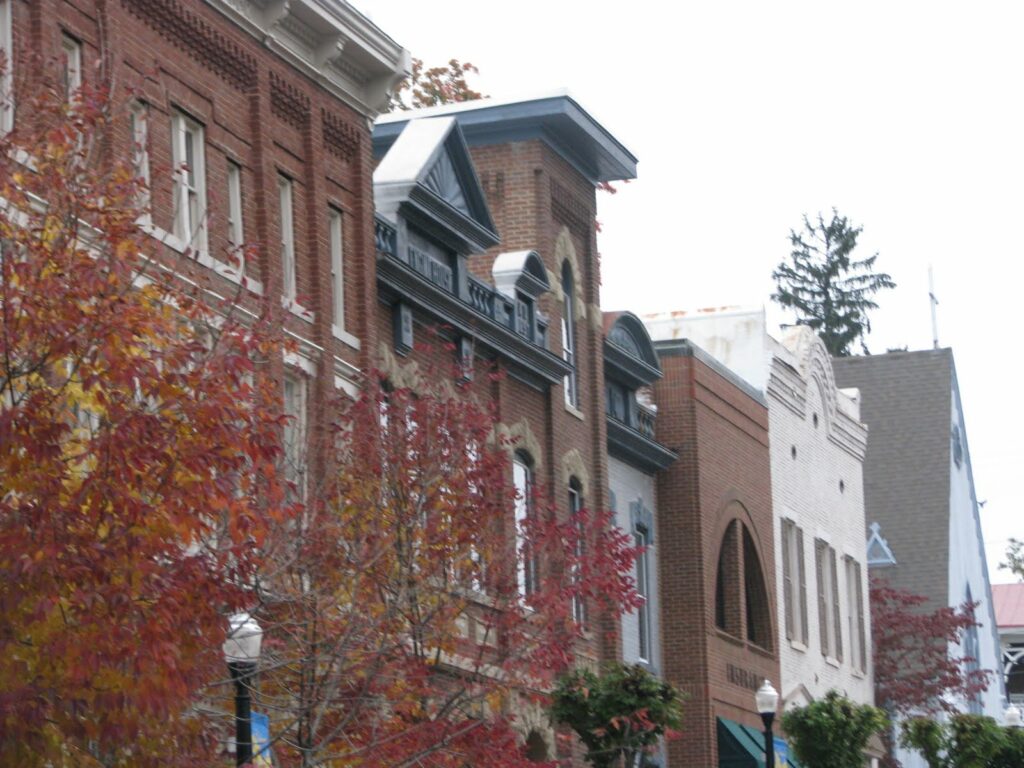 When Nate visited the Montgomery County courthouse, he was underwhelmed by the courthouse but very impressed with the “painstakingly restored” buildings in Mount Sterling. I couldn’t agree more. The historical preservation and adaptive reuse in this community.
When Nate visited the Montgomery County courthouse, he was underwhelmed by the courthouse but very impressed with the “painstakingly restored” buildings in Mount Sterling. I couldn’t agree more. The historical preservation and adaptive reuse in this community.
One building, with markings of “Engine House,” “City Court,” and “Library” now has a banner in front noting the new home of the Montgomery County Historical Museum. The old city jail, “The Bell House,” was constructed in 1815 and restored around 1990 by the local historical society.
Mount Sterling was a regular scene of Civil War activity. Possession of the city changed a dozen times during the War; the courthouse was burned by Confederate forces in December of 1863; the Battle of Mount Sterling (March 22, 1863) resulted in only 12 deaths, but resulted in the capture of 438 prisoners and significant Union supplies; and in June 1864, Gen. Morgan and his horsemen took the vault key from the cashier of Farmer’s Bank and left town with over $60,000.
One of Morgan’s men (Lt. Witherspoon) was tried in a civil action in 1866, but the judgment against Witherspoon was reversed on appeal because robbery was not unlawful under the laws of war.
No Destination (& Kentucky 120) Progress Maps
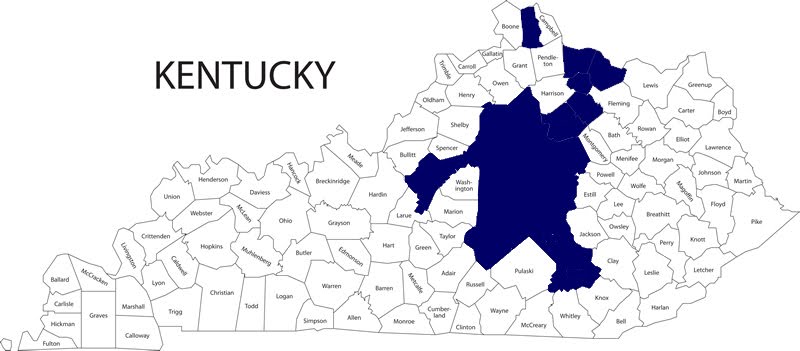
After my October 4 journey through Bourbon, Nicholas, Robertson, Mason and Bracken Counties (I also quickly drove through Harrison County, but without time to meander and stop for pictures – thus, it doesn’t count), I have visited 22 of Kentucky’s 120 counties (or 18.33%).
This coming weekend, my wife’s grandfather would have celebrated his 100th birthday. He passed several years ago, but we will be traveling to Carter County to celebrate. I am going to drive separately and look forward to adding to my count.
Below is a map of Nate’s and my combined journeys. Counties visited by Nate alone are in Red; those visited by me alone are in Yellow. Counties visited by both of us are in Blue.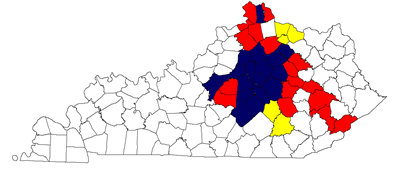
No Destination: Augusta
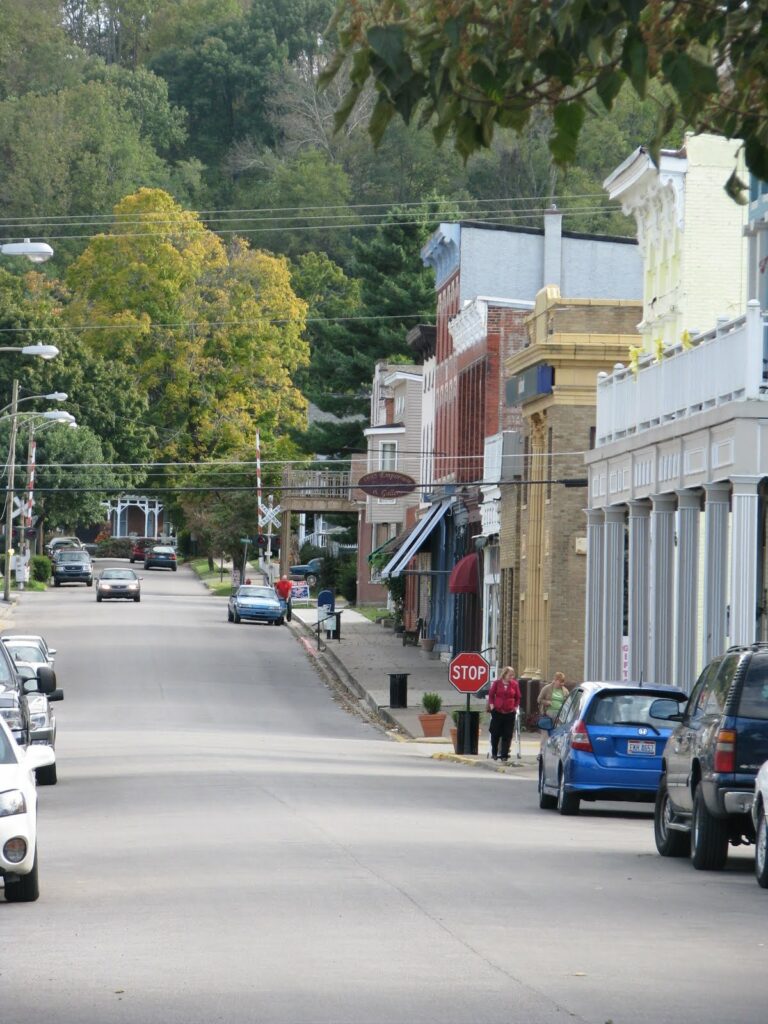 Kentucky history laureate, the late Dr. Thomas Clark listed Augusta as one of Kentucky’s Eleven Treasures that Helped Shape the Commonwealth. Augusta is a fine town on the Ohio River of over 2,000 people. Because I arrived in Augusta in late afternoon, I plan to return so that I might spend more time in this community.
Kentucky history laureate, the late Dr. Thomas Clark listed Augusta as one of Kentucky’s Eleven Treasures that Helped Shape the Commonwealth. Augusta is a fine town on the Ohio River of over 2,000 people. Because I arrived in Augusta in late afternoon, I plan to return so that I might spend more time in this community.
Augusta was the county seat of Bracken County from the creation of the county until the seat was moved to the more centrally located Brooksville in 1839. While this may seem unusual today, Bracken County was once quite large geographically. It contained parts of what is now Bracken, Robertson, Harrison (eastern), Bourbon, Nicholas (most) and Mason (southern) counties.
The town is in terrific condition (especially when compared to neighboring Dover). On a Sunday afternoon, tourists were in great number and shops were open. Though no longer the county seat, Augusta is the center of Bracken County life.
Augusta has much to owe its most famous residents: the Clooneys. Rosemary Clooney owned a summer home in Augusta, while her brother (journalist, newsanchor and gameshow host Nick) continues to live in Augusta. Of course, it is Nick’s son (actor George) who is today’s most well-known Clooney; George attended and graduated from the Augusta High School (pictured below).
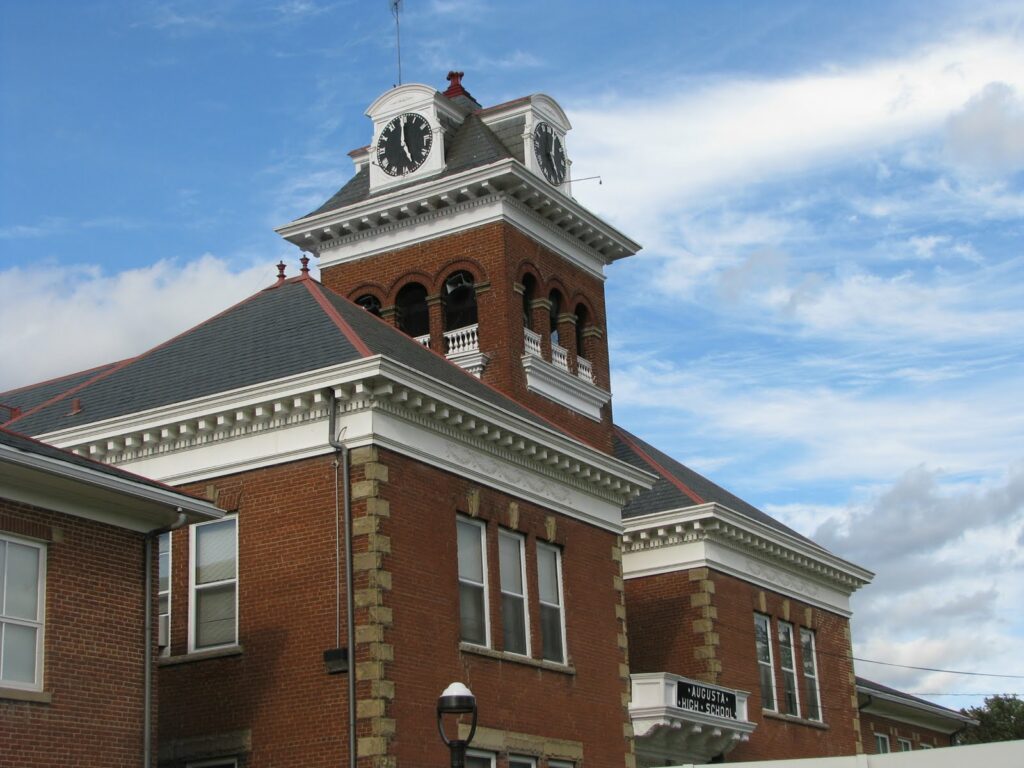 Augusta is also the home of Miss America 2000, Heather Renee French (Henry).
Augusta is also the home of Miss America 2000, Heather Renee French (Henry).

